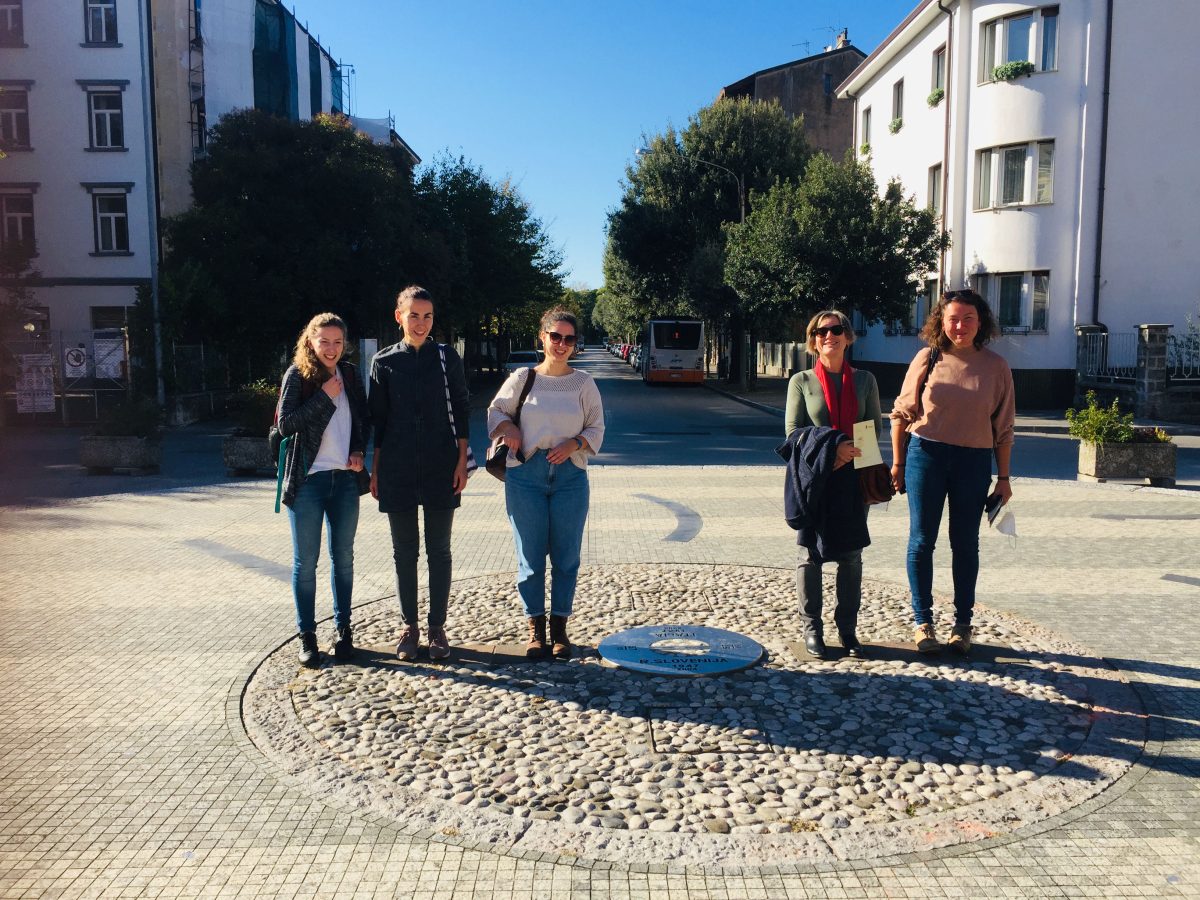by Alexandra Schwell
“Gorizia and Nova Gorica, even if they belong to two different states, continue to imagine themselves as a single city.”
Bisiani und Umani 2022: 292
In October 2021, five students of Applied Cultural Analysis at Klagenfurt University traveled with Alexandra Schwell to the Slovenian-Italian border to explore how memory, present and future visions are shaped in everyday life of the twin cities of Nova Gorica and Gorizia. Together with Miha Kozorog and his students from the Department of Ethnology and Cultural Anthropology at the University of Ljubljana, we wanted to learn about the challenges of two highly diverging border towns with a turbulent history, jointly preparing to be the 2025 European Capital of Culture.
“GO! Borderless” is the motto, story, and vision of the 2025 European Capital of Culture, the “twin cities” of Slovenian Nova Gorica and Italian Gorizia. The “GO! Borderless” website tells us that the two cities’ fates are inextricably tied together, that they “strive and dwell together,” divided by wars but united by friendship and intense cooperation. “The twin cities Gorizia and Nova Gorica bring cross-border cooperation to the next level,” the European Union exclaims with excitement, proclaiming the cities a “symbol for EU enlargement.” (Klemenz-Kelih)
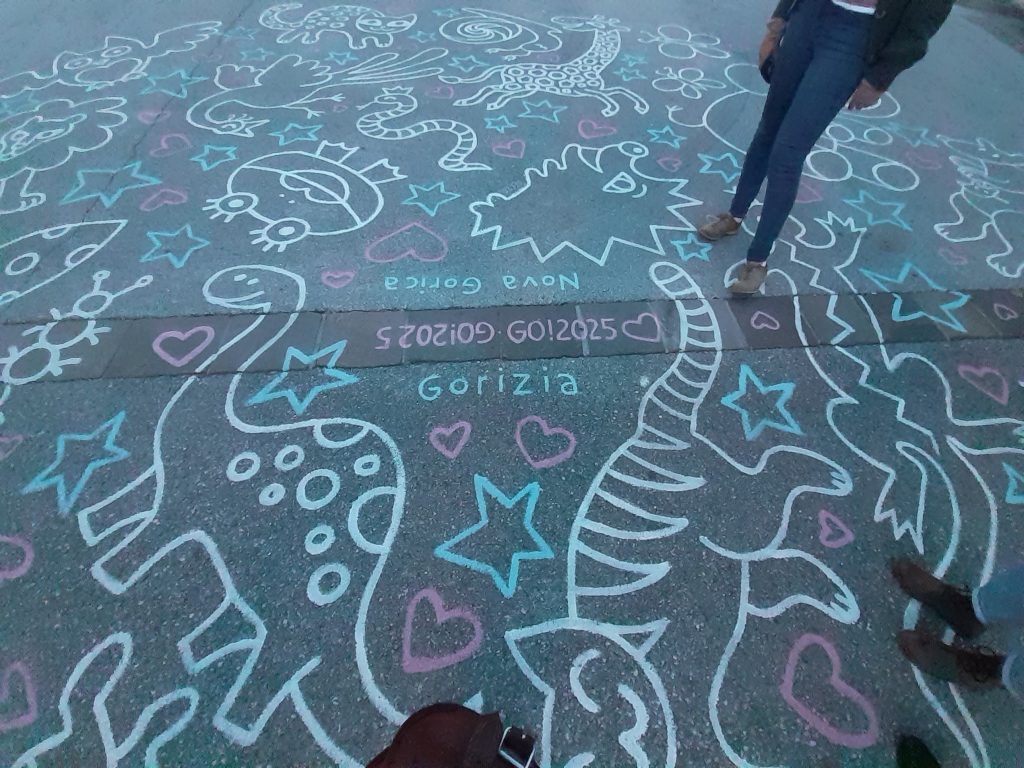
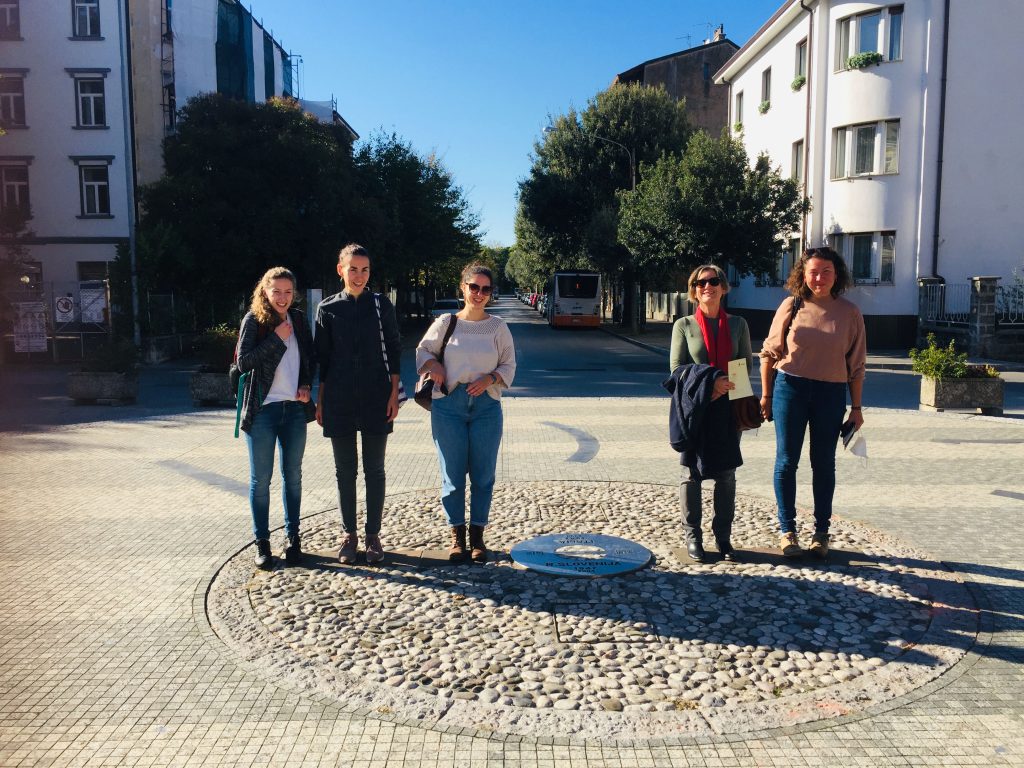

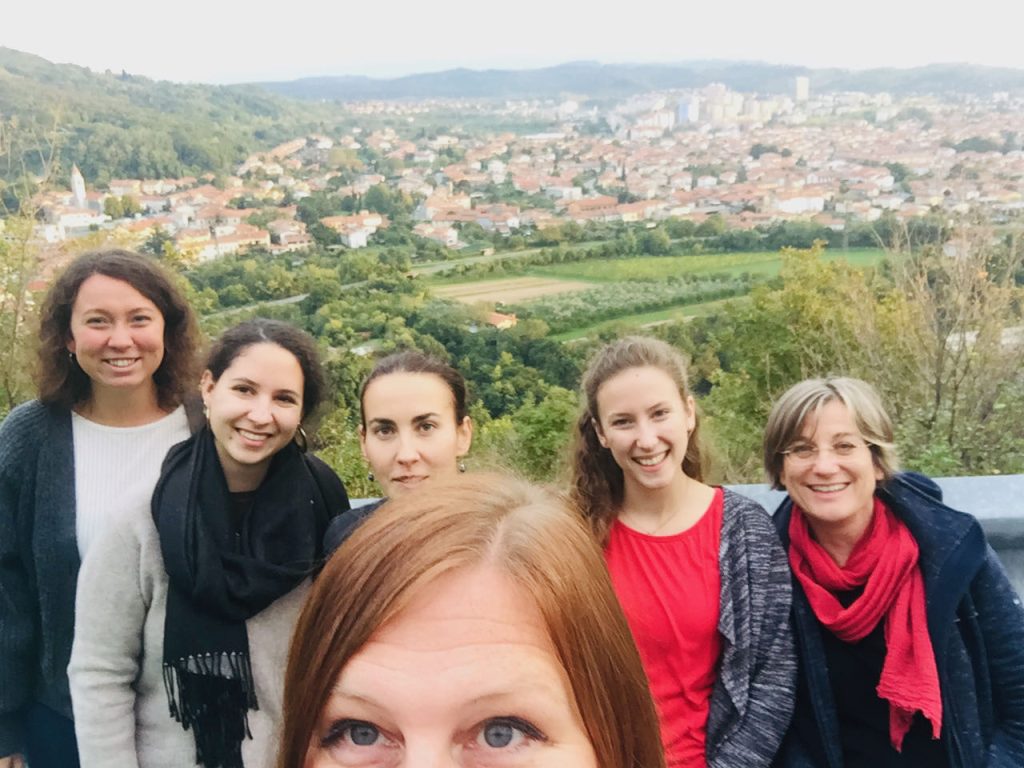

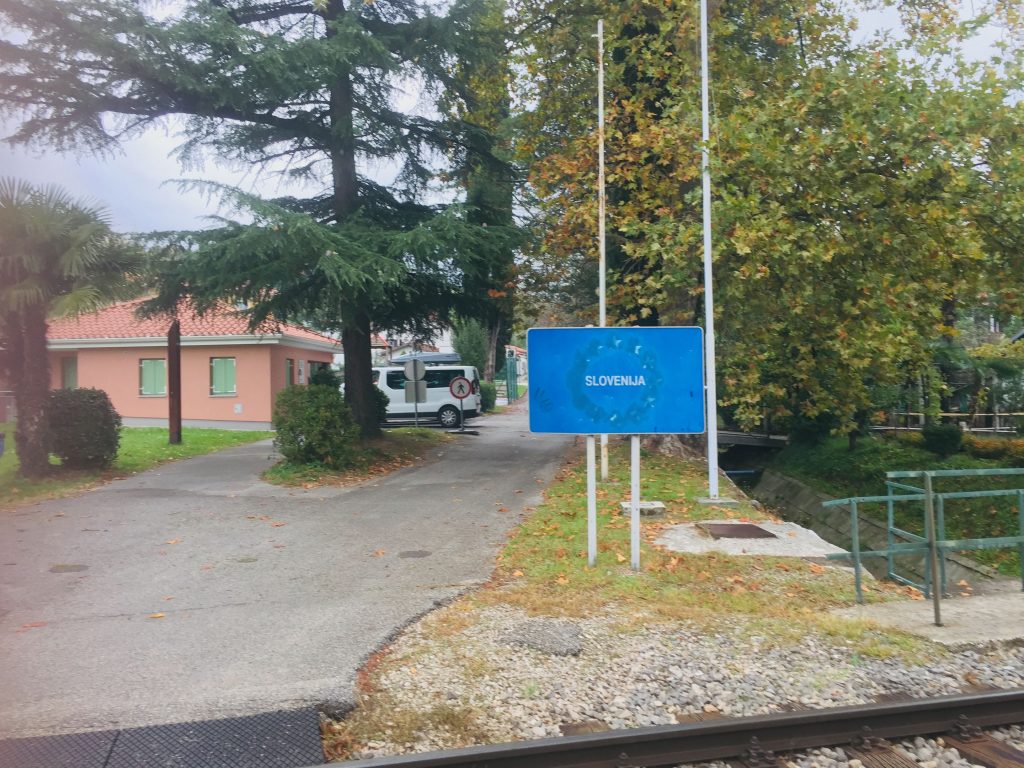
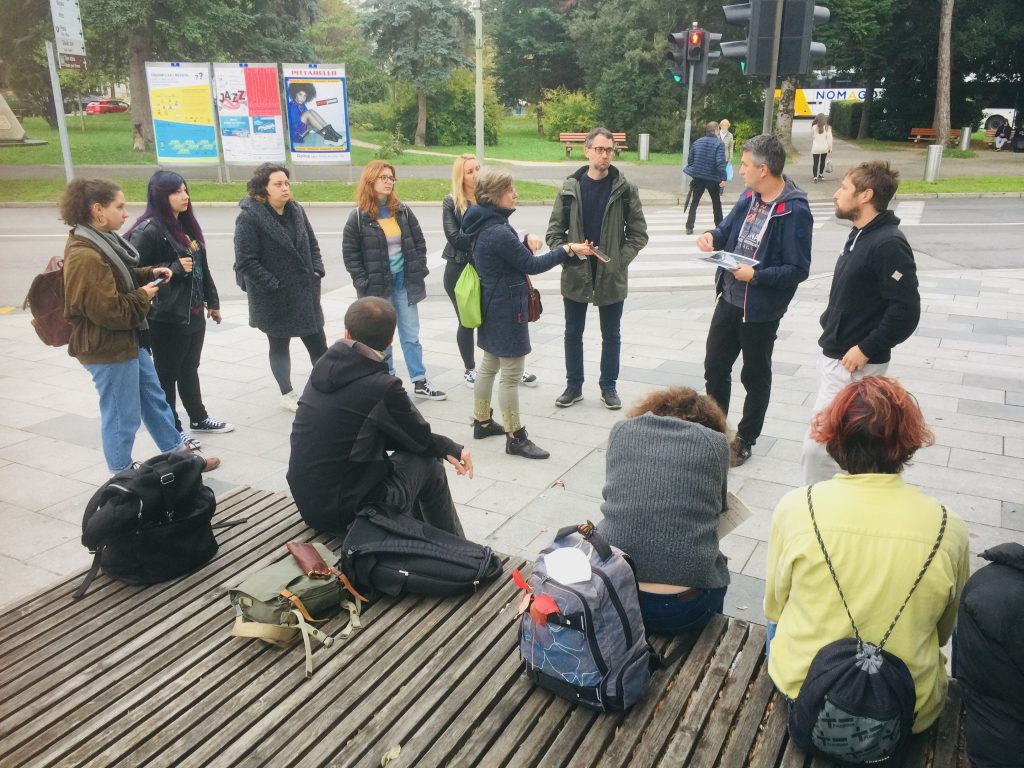
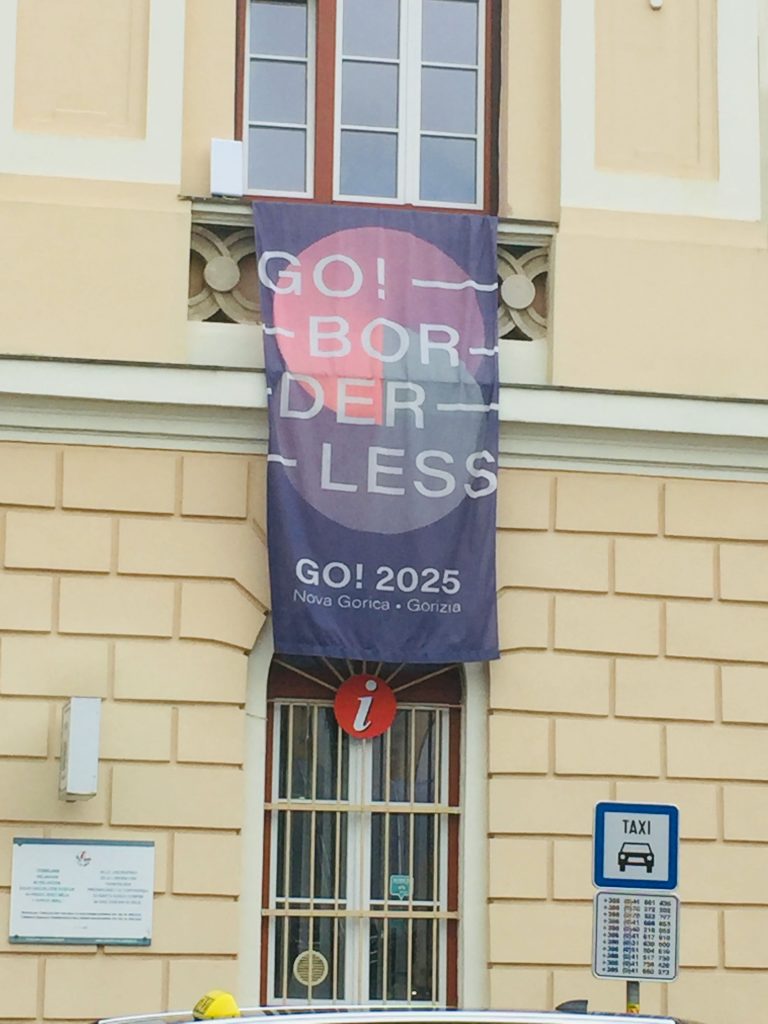
The twin cities of Nova Gorica and Gorizia. “Twin Cities” is a ubiquitous catchword when googling, visiting, or strolling through Nova Gorica and Gorizia. It comes almost naturally, as if separating the two towns would deprive them of a vital organ. But what does it mean? How appropriate is the term “twin cities”? What would we expect from twins? What can the concept of twins teach us about two border towns, their relationship, and the expectations and hopes that the notion of “twins” entails? Might our investigation of Nova Gorica and Gorizia possibly be a “twin study”?
Twin studies analyze such diverse questions as smoking and drinking patterns (Johnson u. a. 2011) and shall serve to solve the eternal question of nature vs. nurture, whether it is genetic or environmental influences that define who we are. Such studies often entail tragic life histories of twins or triplets being forcefully separated at an early age. The Iron Curtain separated Nova Gorica and Gorizia, whereas one of the twins, Nova Gorica, was more than 1000 years younger than its older sibling. Until the end of World War I, Gorizia was a multi-ethnic and trilingual town (Italian, Slovenian, German). A crucial economical center in the times of the Habsburg Empire, it was severely damaged by the Isonzo Front in World War I and, with the Treaty of Saint Germain, became part of the Kingdom of Italy. A strong Italianization occurred between the two World Wars, accompanied by a specific “borderland fascism” (Capogreco 2019: 54). After World War II, the Iron Curtain cut through the town of Gorizia, and its more minor Eastern part was assigned to Yugoslavia. The borders were closed after World War II due to the confrontation of rivaling political hemispheres. On the other side of the border in Yugoslavia, the foundation stone for Nova Gorica was laid on June 13, 1948, as a model socialist town.
While some might argue that the enormous age difference between Nova Gorica and Gorizia disqualifies them as twins, I suggest we consider them fraternal (dizygotic) twins instead of identical (monozygotic) twins, also since Nova Gorica and Gorizia certainly do not look alike.
The “creation of cross-border common city space”
Let us also leave aside such tragic stories as the Siamese twins Chang and Eng Bunker and how they have been described, presented, exploited, laughed at, and humiliated.
Nevertheless, between themselves, the two cities were not on equal terms. For a long time, the relationship between the two cities was defined primarily by consumption, gambling, and trade rather than by a genuine sense of belonging together. The Italian state made Gorizia a garrison with 5,000 soldiers and granted tax breaks. The Slovenians came for a shopping spree and bought cheap jeans and electrical appliances in Gorizia. “The border was a resource for Gorizia,” as the former head of the province of Gorizia’s department for cross-border relations put it in 2009.
This changed with the breakup of Yugoslavia in 1991 and the opening of borders. Nova Gorica, now part of Slovenia, developed a vibrant Italian-influenced cultural scene and became a bustling university town. Tourists, especially from neighboring Italy, flock to Nova Gorica’s numerous casinos (Steindl), guaranteeing the high city revenues that Gorizian politicians envy as Gorizia suffers from its peripheral location, its economic decline, and a high number of vacancies. The hope for the future of the twin cities lies in the European Capital of Culture 2025, true to its motto: “GO! Borderless.”
If, for a moment, we accept that Nova Gorica and Gorizia are fraternal twins, how can we understand their relationship? What about the almost mythical capabilities of twins to feel the other’s pain and read each other’s minds? How do Nova Gorica’s and Gorizia’s feelings of connection, and the border between them, materialize? (Pachler)
In contrast to what many people think about twins’ special connection, “like all siblings in a family, twins can at times feel competitive with one another and struggle to work out their unique identity in the family.” Likewise, Slovenian interlocutors report Italian feelings of superiority and Slovenian inferiority complexes, linguistic and other asymmetries, and stereotyping (Kainz). The former welfare gap between Italy and Yugoslavia has, in fact, been turned upside down, creating friction and uneasiness in everyday lives. Hence, looking for cinematic role models, Nova Gorica and Gorizia are less like Fred and George Weasley but rather resemble the twins from the 1988 film of the same name starring Arnold Schwarzenegger and Danny DeVito as “unlikely fraternal twin brothers […] who were separated at birth”. The IMDb movie database summarizes “Twins” as follows: „A physically perfect but innocent man goes in search of his long-lost twin brother, who is short, a womanizer, and small-time crook.“ But in the case of Nova Gorica and Gorizia, who is who?
Let this question settle for a moment and let us turn to cultural history and literature instead. Juliana De Nooy’s insightful book “Twins in Contemporary Literature and Culture: Look Twice” identifies several literary and cinematographic motifs in twin literature (Nooy 2005). There is “surviving sameness” against all odds, then there is the evil twin sister and the wicked twin brothers, the queer twin, and the denied and dispelled mutant twin who returns with a vengeance. Most motifs will probably not be helpful for us in the attempt to understand Nova Gorica and Gorizia.
Let us turn to history instead. Twins in ancient legends and myths, more often than not, are fraternal, not identical. As De Nooy points out, twins “often embody opposed talents and social principles: the hunter and the herdsman (Esau and Jacob), the labourer and the musician (Zethus and Amphion) […]). Most notably, however, they are hostile rivals to the point of fratricide” (De Nooy 2005: 114). In ancient tales, twins are antagonists who rival for power, a struggle often ending with one twin’s death to restore social cohesion. Nova Gorica and Gorizia should not look for these kinds of twin stories.
Luckily, with the advent of modern times, also twin stories changed and placed their emphasis less on submission and power but on cohabitation and togetherness. De Nooy makes an interesting observation about the relationship between twins and nations and “tales of cultural divides”: “the twins story most readily available for use in contemporary tales of nations [is] that of the reconciliation of twins raised apart. Separated early in life, living parallel but contrasting lives on opposite sides of a border, such twins finally meet and rekindle a relationship across the frontier” (De Nooy 2005: 116). The basic message behind this is that a border is an artificial division that creates an arbitrary difference that otherwise would not exist (De Nooy 2005: 118). To be sure, differences do not cease to exist when the twins are reunited. They may be the beginning of a long and painful journey where both navigate, mirroring the relationship of self and other. Yet, as De Nooy argues for such literary twin tales, they “illustrate the arbitrariness of social and geographical dividing lines and make the case that what the two share outweighs their differences” (De Nooy 2005: 136).
Hence, if we follow De Nooy one last time when she says that “the uses of twins to represent fissures in national or cultural identity reveal understandings of the causes of and remedies for tensions and conflict among peoples” (De Nooy 2005: 136), what does this tell us about Nova Gorica and Gorizia? Which twin is who? Who gets to be the witty Vincent (Danny DeVito), and who is the slightly naive Julius (Arnold Schwarzenegger)? Fraternal twins may complement each other; add what the other one lacks. But what about jealousy, inequalities, and frustration? What does it mean when, after a joyous reunion, the twins discover that their lives could have been different all along?
These are only some of the very many questions that the inhabitants of both towns, the twin cities, their municipalities, and last but not least, the organizers of GO! Borderless will have to figure out. There are as many answers as there are actors involved on both sides of the border. Maybe their relationship is best caught in the 2014 movie “The Skeleton Twins”: “Having both coincidentally cheated death on the same day, estranged twins reunite with the possibility of mending their relationship.”
References
Bisiani, Thomas, and Vittoria Umani (2022): Forms of the Void: Gorizia and the Border That No Longer Exists. Athens Journal of Architecture 8 (3): 277–94.
Capogreco, Carlo Spartaco (2019): Mussolini’s Camps: Civilian Internment in Fascist Italy (1940-1943). London; New York: Routledge.
Johnson, Wendy, Kirsten Ohm Kyvik, Erik L. Mortensen, Axel Skytthe, G. David Batty, and Ian J. Deary (2011): Does Education Confer a Culture of Healthy Behavior? Smoking and Drinking Patterns in Danish Twins. American Journal of Epidemiology 173 (1): 55–63.
Nooy, Juliana De (2005): Twins in Contemporary Literature and Culture: Look Twice. Houndmills, Basingstoke: Palgrave Macmillan.
Veselinovič, Jaro, and Miha Kozorog (2022): Evropska prestolnica kulture 2025: Večtirno gibalo razvoja čezmejnega mesta Nove Gorice in Gorice. Traditiones 51 (3): 75–97.
